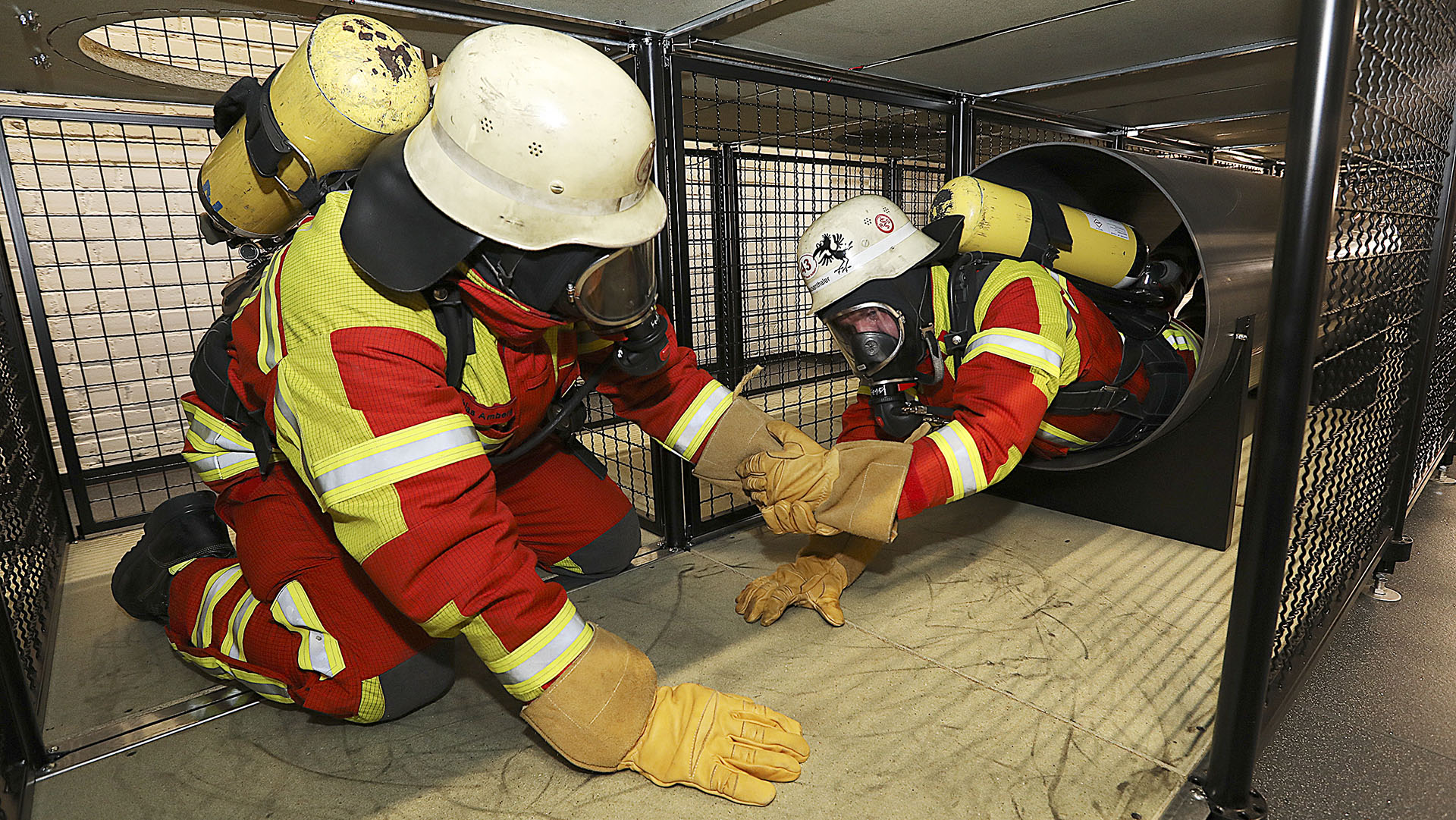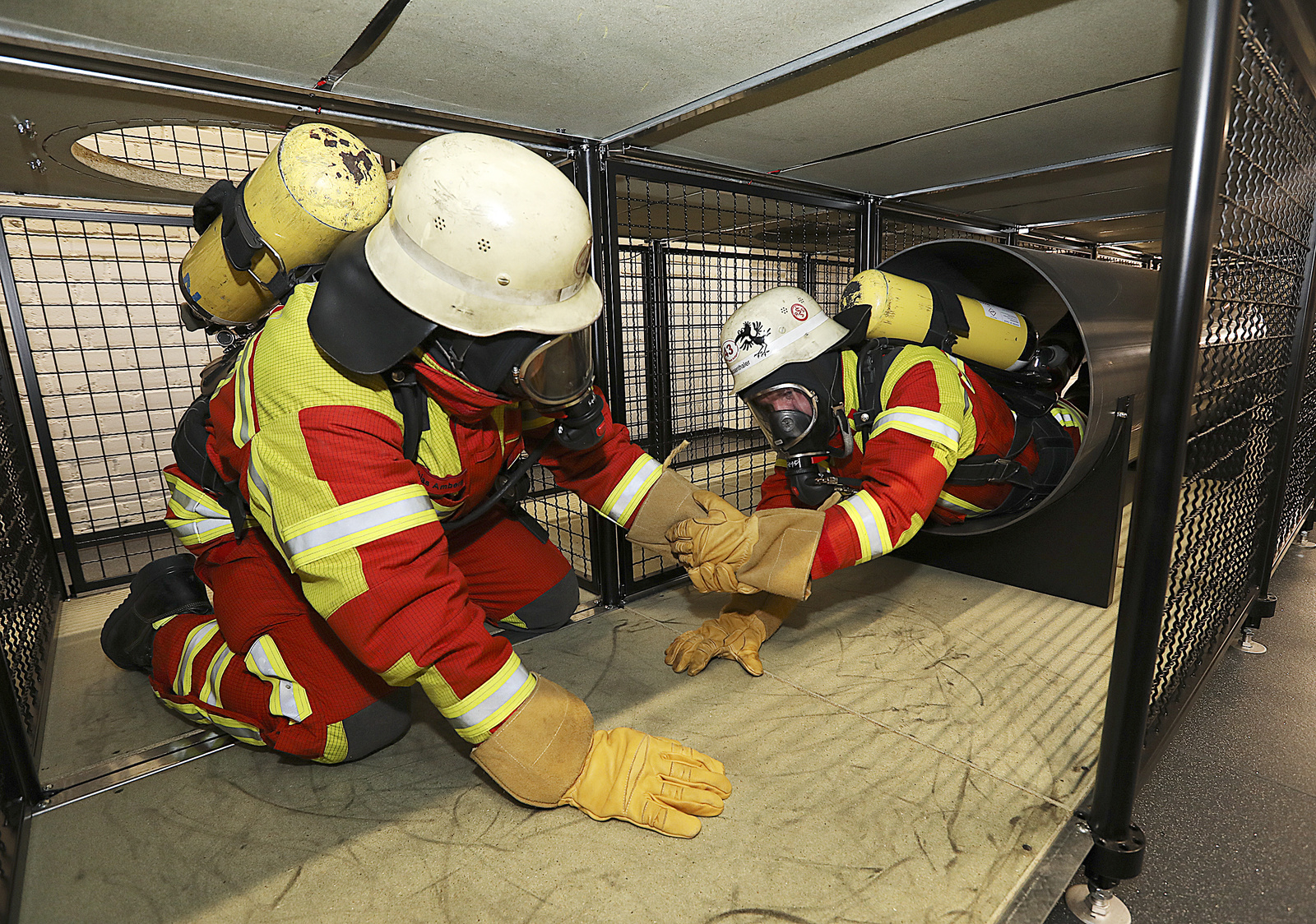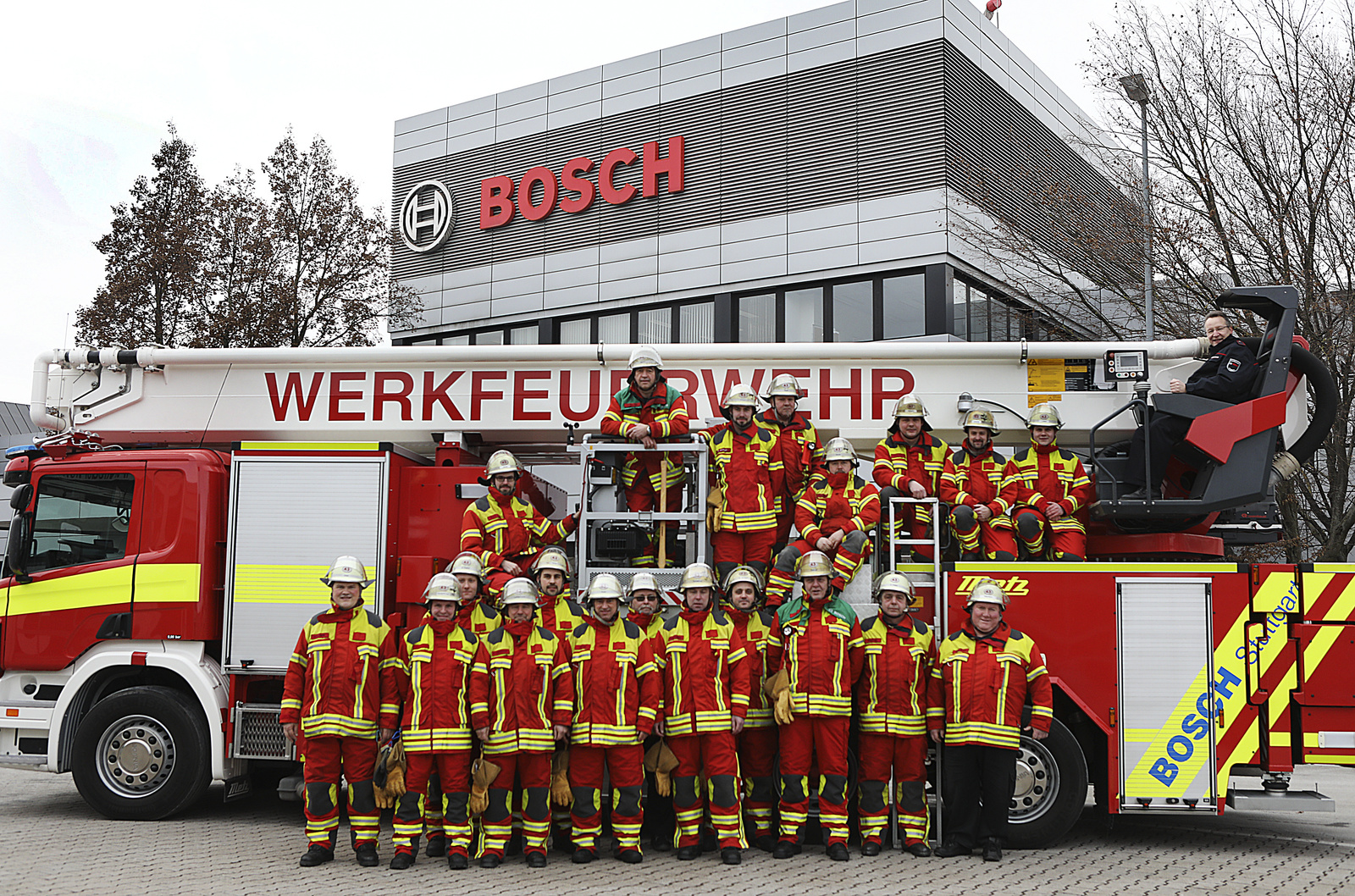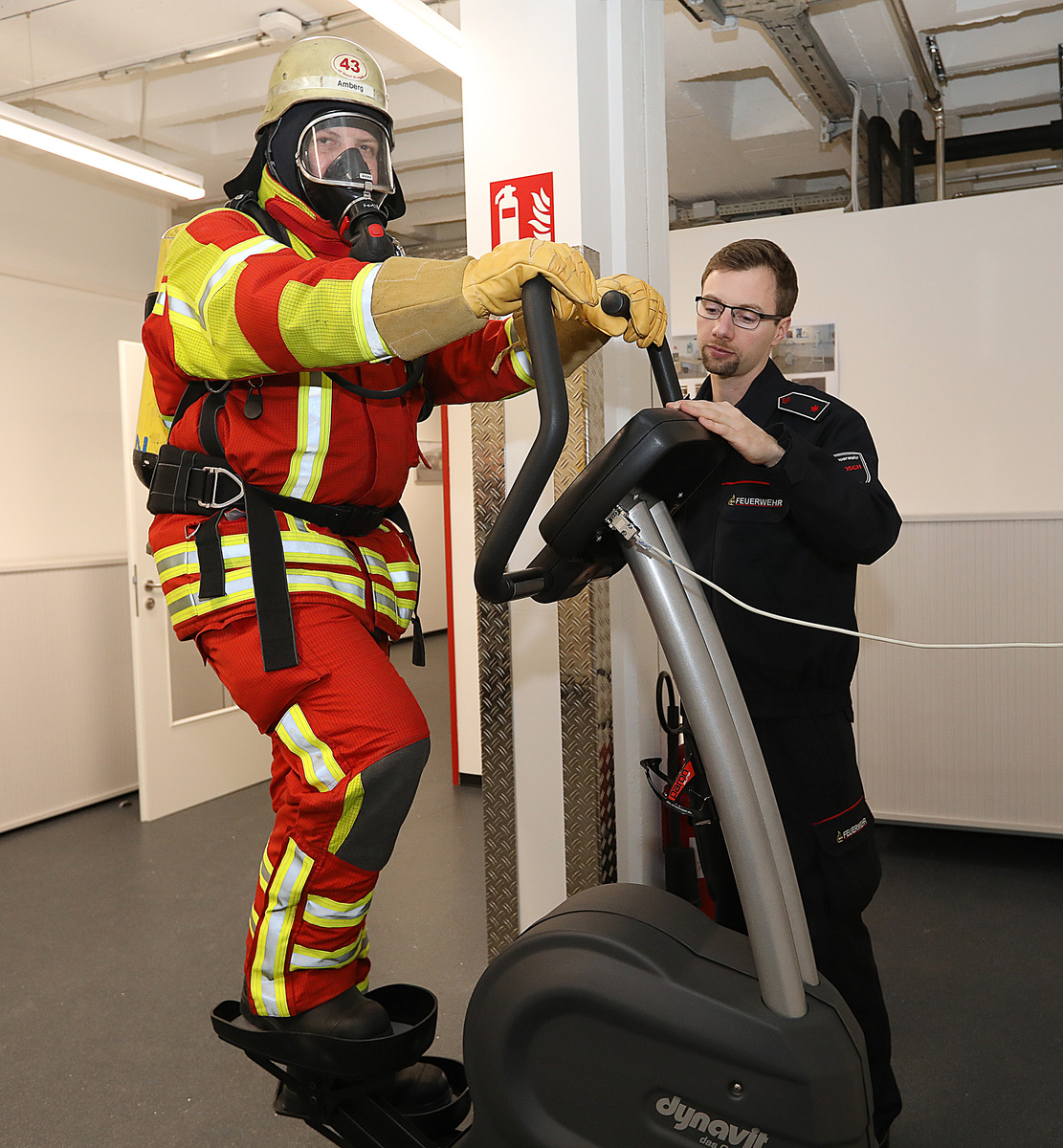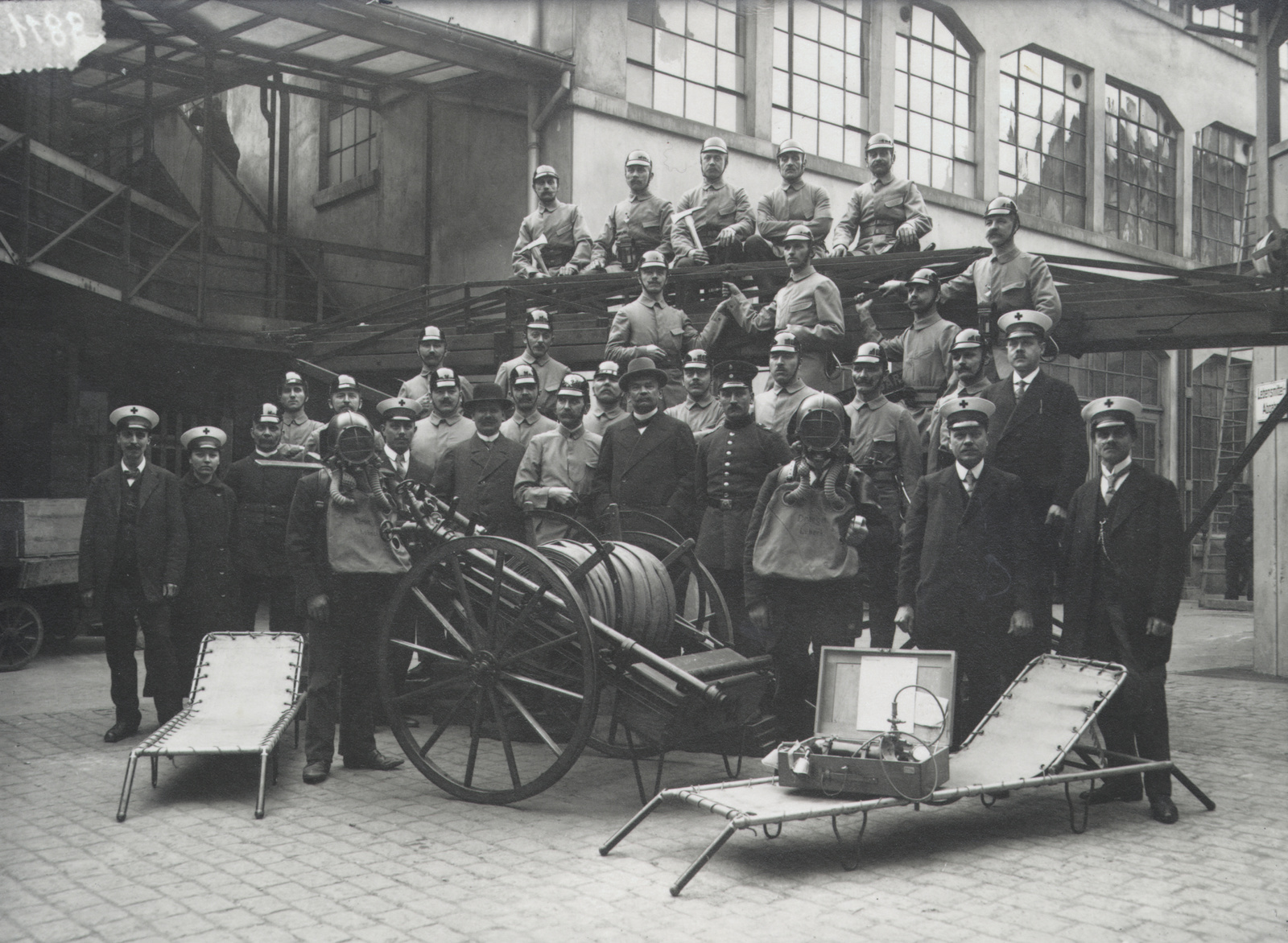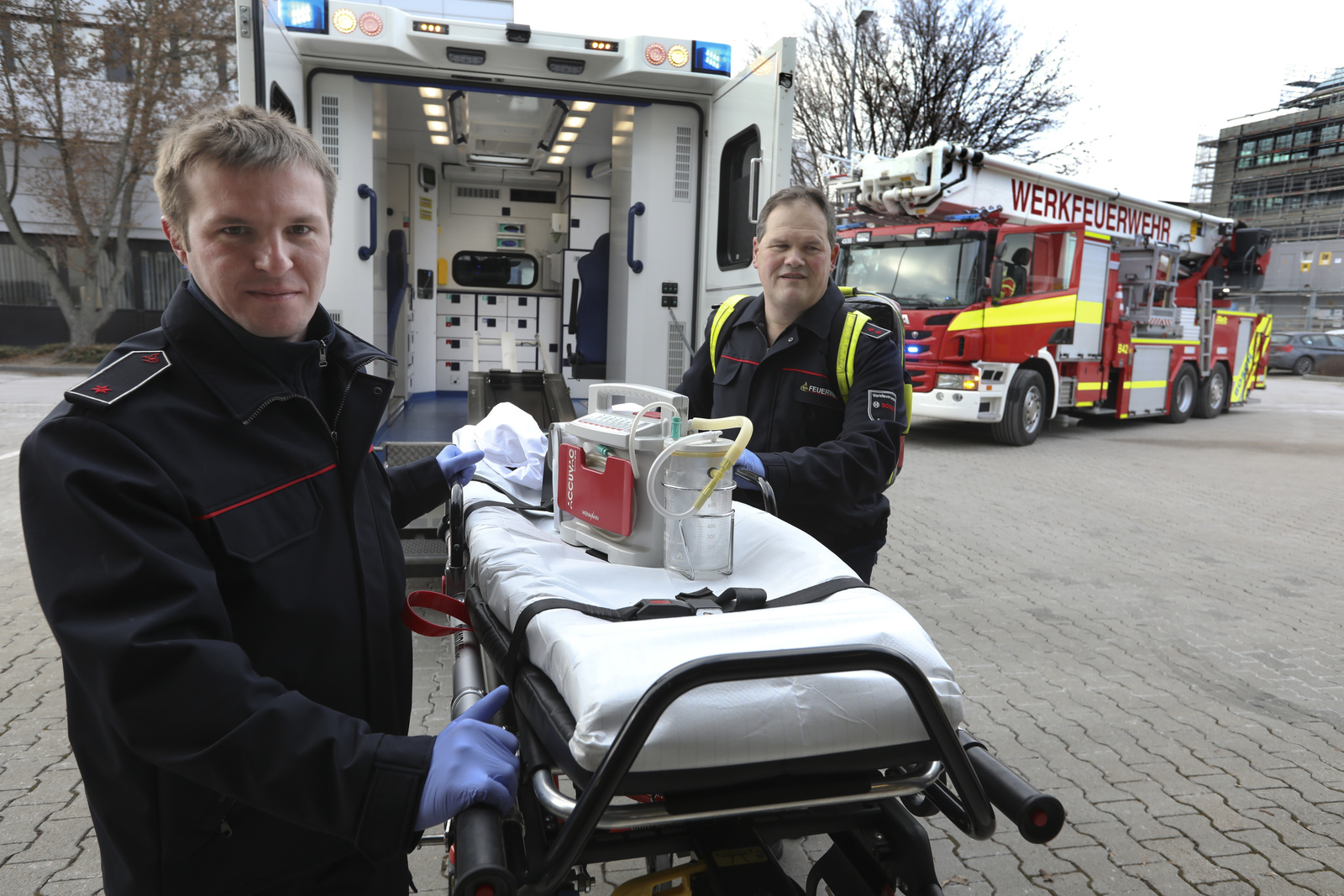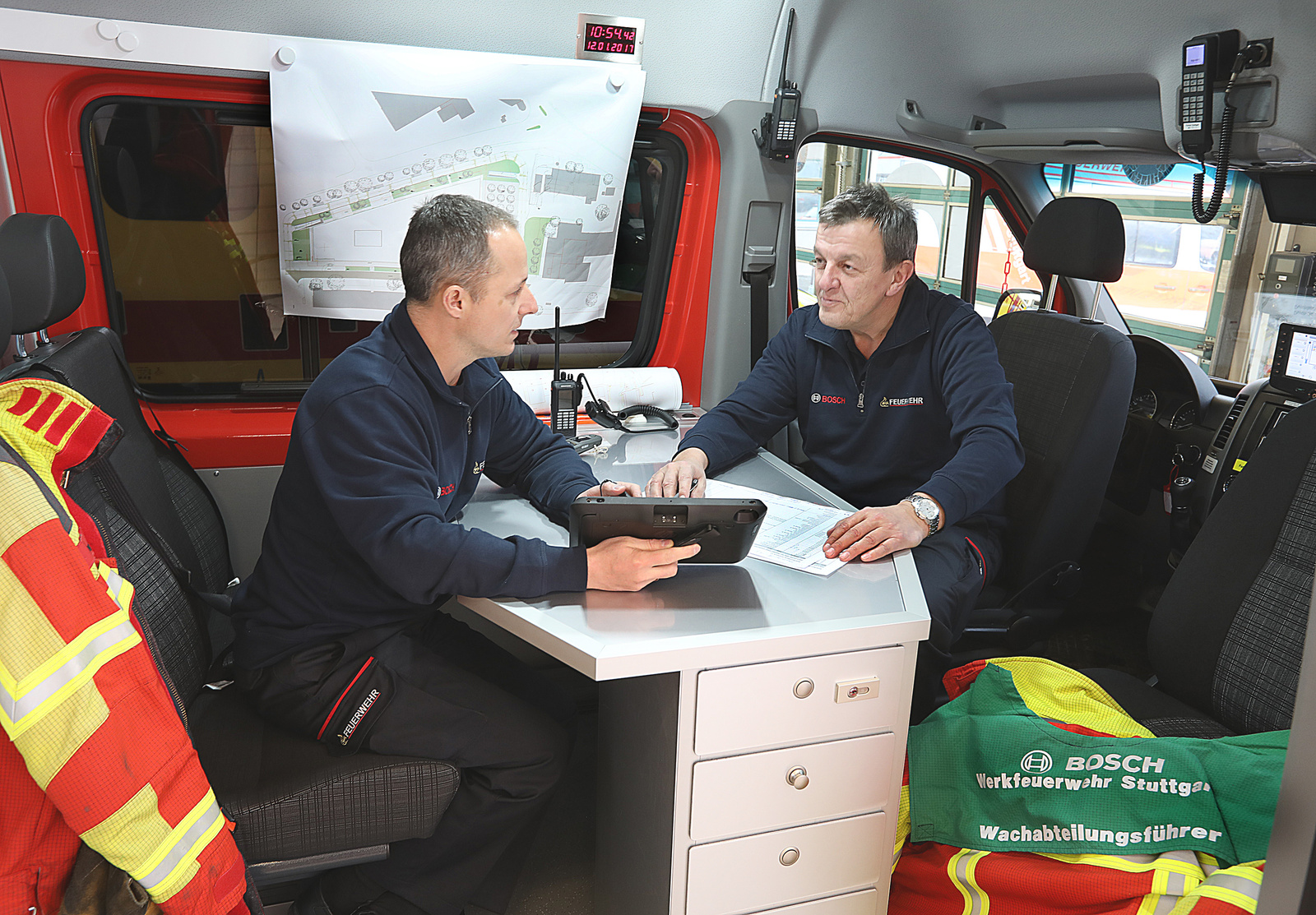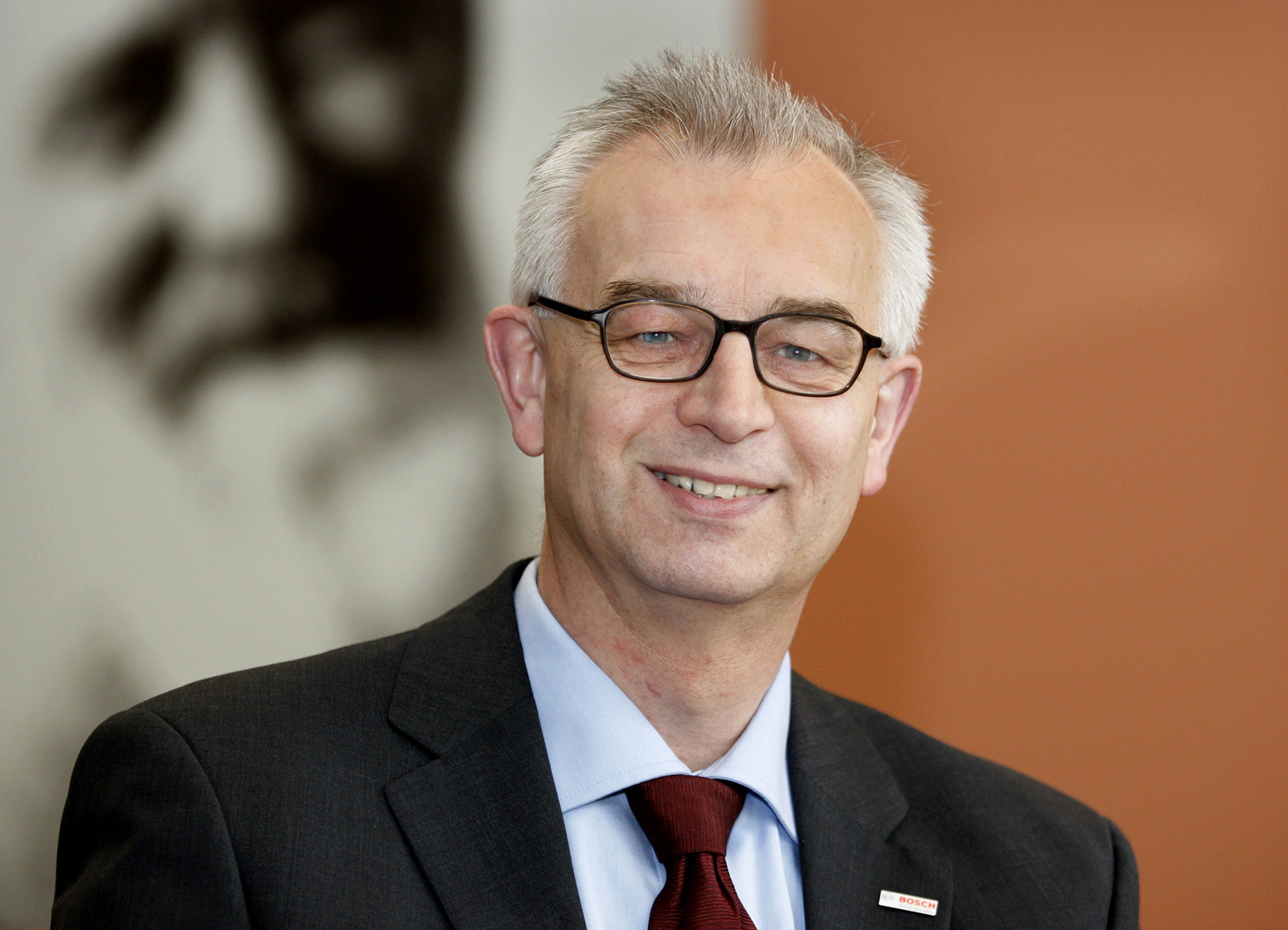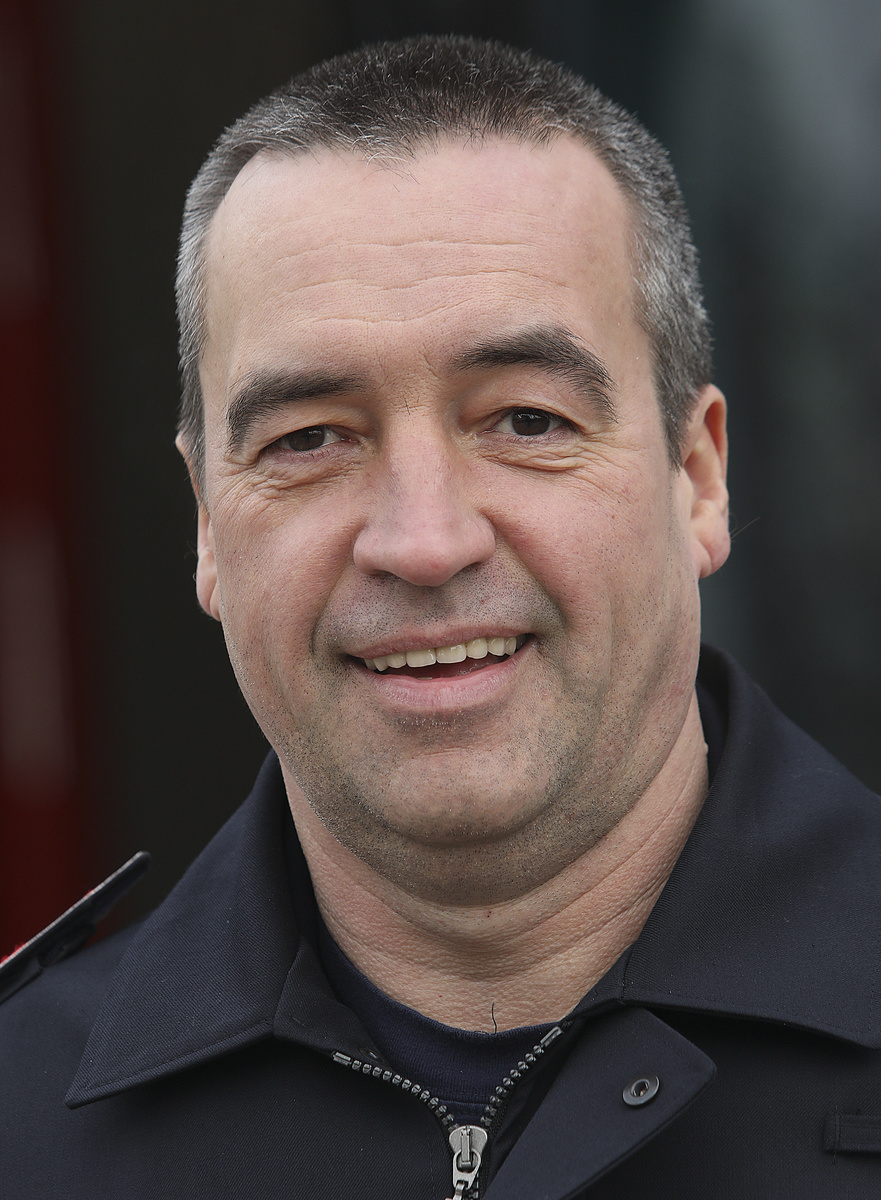Stuttgart, Germany – 100 years of the Bosch plant fire service: on February 10, 1917, Wendelin Mayr, then the chief of Stuttgart’s fire department, began to set up an in-house fire service for Robert Bosch’s plant. Today, around 1,900 associates worldwide are members of the Bosch fire services. They provide round-the-clock protection against threats, fire, and environmental damage, either on a full- or part-time basis. They are called into action more than 7,000 times a year in Germany alone. They also train their colleagues, prevent fires, and run drills. “For 100 years, our associates in the Bosch fire services have provided prevention and protection on company premises,” says Christoph Kübel, member of the board of management and director of industrial relations of Robert Bosch GmbH, to mark the anniversary of the fire service’s foundation. “When they are deployed, the firefighters arrive on the scene quickly and are well-versed in protecting and saving lives. In many places, they collaborate with municipal fire departments to ensure that members of the general public remain safe.” There is an increasing need for qualified young firefighters: this year, Bosch plans to establish comprehensive occupational training for plant firefighters at its German locations.
Bosch fire services: reliable partners for towns and municipalities
Bosch has over 60 plant fire services and emergency response teams worldwide. Around 400 firefighters work for the company on a full-time basis. There are also approximately 1,500 part-time firefighters who have gained the necessary special qualifications. The associates at the Bosch fire services are also in demand by professional fire departments. In Germany alone, the Bosch fire services are reliable partners for more than 35 cities and municipalities, according to Kübel. Bosch fire services provide support with personnel and equipment outside the company’s grounds if the situation requires it. “This means that Bosch fire services also contribute to municipal fire protection and provide added security,” Kübel says, summarizing their range of duties.
In the future: cross-location occupational training to become a plant firefighter
There is a significant need for qualified firefighters throughout Germany – not just at Bosch. One reason for this is rising demand from municipal fire departments due to new legislation, but also because of the stringent requirements placed on candidates as well as the limited number of occupational training places. This is why Bosch is planning to offer occupational training at around ten locations in Germany this year, enabling participants to receive plant firefighter qualification from the German Chamber of Commerce and Industry (IHK). “In the future, we want to prepare around 15 young people per year for these vocational duties,” says Siegfried Czock, head of occupational and professional training policies Germany, looking to the future. “As part of this, we want to contribute our more than 100 years of experience to in-house vocational training.”
Fire service school: regular training with respiratory protection equipment
The first Robert Bosch fire station is now the technology and services company’s fire service school. In the future, some of the new vocational training for plant firefighters will also take place there. Since 1973, the school has provided qualifications to associates in the German Bosch fire services at volunteer fire department level, but also to associates of other employers and voluntary fire departments. At the heart of the training is a facility that allows drills with respiratory protection equipment. With footstep sensors as well as infrared and thermal cameras, trainers monitor how the drills are going whenever the firefighters practice going through the physical and mental strains involved in rescue and recovery in conditions that reflect those of a real emergency. “Even in thick smoke, they have to be able to fight their way through a 50 meter long compartmentalized cage system spread across three levels,” explains Wolfgang Mahl, watch manager and responsible for respiratory training at the Stuttgart-Feuerbach plant fire department. “Between turnout gear and a respiratory protection device, all of a sudden you’ve got 20 kilograms of equipment.” Not least because of this, the challenging training in the course is considered the key discipline in firefighter training. Each firefighter has to complete and pass at least one round of this course once per year.
The beginning: 40 men, one ladder, one fire hose cart
The Bosch plant fire service’s success story began with a fire hose cart, an extendable ladder, a few manual fire engines, and two respiratory protection devices. That was the equipment that the fire department started out with. With 40 volunteer firefighters, Mayr formed the basis for firefighting within the company at the time. The company also became conscious of fire protection. One of the first improvements was the so-called gasoline wash-out box – a tin box whose lid closed automatically in the event of fire. “This meant that fires in facilities where petrol was used to rinse things out could be extinguished quickly,” explains watch manager Wolfgang Mahl, adding that Robert Bosch quickly saw the benefits of this fast, effective method of stopping fires and arranged to have the wash-out boxes introduced at all plants without delay. Today, fire prevention, regular training for associates, and environmental protection are among the duties of the Bosch plant firefighters around the world.
About Bosch
The Bosch Group is a leading global supplier of technology and services. It employs roughly 400,500 associates worldwide (as of December 31, 2017). According to preliminary figures, the company generated sales of 78 billion euros in 2017. Its operations are divided into four business sectors: Mobility Solutions, Industrial Technology, Consumer Goods, and Energy and Building Technology. As a leading IoT company, Bosch offers innovative solutions for smart homes, smart cities, connected mobility, and connected industry. It uses its expertise in sensor technology, software, and services, as well as its own IoT cloud, to offer its customers connected, cross-domain solutions from a single source. The Bosch Group’s strategic objective is to create solutions for a connected life, and to improve quality of life worldwide with products and services that are innovative and spark enthusiasm. In short, Bosch creates technology that is “Invented for life.” The Bosch Group comprises Robert Bosch GmbH and its roughly 450 subsidiaries and regional companies in some 60 countries. Including sales and service partners, Bosch’s global manufacturing, engineering, and sales network covers nearly every country in the world. The basis for the company’s future growth is its innovative strength. At 125 locations across the globe, Bosch employs 62,500 associates in research and development.
The company was set up in Stuttgart in 1886 by Robert Bosch (1861-1942) as “Workshop for Precision Mechanics and Electrical Engineering.” The special ownership structure of Robert Bosch GmbH guarantees the entrepreneurial freedom of the Bosch Group, making it possible for the company to plan over the long term and to undertake significant up-front investments in the safeguarding of its future. Ninety-two percent of the share capital of Robert Bosch GmbH is held by Robert Bosch Stiftung GmbH, a charitable foundation. The majority of voting rights are held by Robert Bosch Industrietreuhand KG, an industrial trust. The entrepreneurial ownership functions are carried out by the trust. The remaining shares are held by the Bosch family and by Robert Bosch GmbH.
Additional information is available online at www.bosch.com, iot.bosch.com,www.bosch-press.com, www.twitter.com/BoschPresse

